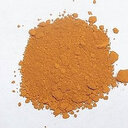Omega-3 fatty acids, phenolic compounds and antioxidant characteristics of chia oil supplemented margarine.
Keywords
Abstract
BACKGROUND
Chia (Salvia hispanica L.) is known as power house of omega fatty acids which has great health benefits. It contains up to 78% linolenic acid (ω-3) and 18% linoleic acid (ω-6), which could be a great source of omega-3 fatty acids for functional foods. Therefore, in this study, margarines were prepared with supplementation of different concentrations of chia oil to enhance omega-3 fatty acids, antioxidant characteristics and oxidative stability of the product.
METHODS
Margarines were formulated from non-hydrogenated palm oil, palm kernel and butter. Margarines were supplemented with 5, 10, 15 and 20% chia oil (T1, T2, T3 and T4), respectively. Margarine without any addition of chia oil was kept as control. Margarine samples were stored at 5 °C for a period of 90 days. Physico-chemical (fat, moisture, refractive index, melting point, solid fat index, fatty acids profile, total phenolic contents, DPPH free radical scavenging activity, free fatty acids and peroxide value) and sensory characteristics were studied at the interval of 45 days.
RESULTS
The melting point of T1, T2, T3 and T4 developed in current investigation were 34.2, 33.8, 33.1 and 32.5 °C, respectively. The solid fat index of control, T1, T2, T3 and T4 were 47.21, 22.71, 20.33, 18.12 and 16.58%, respectively. The α-linolenic acid contents in T1, T2, T3 and T4 were found 2.92, 5.85, 9.22, 12.29%, respectively. The concentration of eicosanoic acid in T2, T3 and T4 was 1.82, 3.52, 6.43 and 9.81%, respectively. The content of docosahexanoic acid in T2, T3 and T4 was present 1.26, 2.64, 3.49 and 5.19%, respectively. The omega-3 fatty acids were not detected in the control sample. Total phenolic contents of control, T1, T2, T3 and T4 samples were 0.27, 2.22, 4.15, 7.23 and 11.42 mg GAE/mL, respectively. DPPH free radical scavenging activity for control, T1, T2, T3 and T4 was noted 65.8, 5.37, 17.82, 24.95, 45.42 and 62.8%, respectively. Chlorogenic acid, caffeic acid, quercetin, phenolic glycoside k and phenolic glycoside Q in T3 were present 0.78, 0.73, 1.82, 4.12 and 4.49 mg/mL, respectively. After 90 days of storage period, free fatty acids and peroxide value of all the treatments were less than 0.2 (% and MeqO2/kg). Sensory characteristics of treatments were not different from the control.
CONCLUSIONS
Margarines supplemented with chia oil showed enhanced level of omega-3 fatty acids and antioxidant characteristics. These results suggest that chia oil can be used for formulation of margarine with increased level of omega-3 fatty acids and acceptable sensory characteristics.



